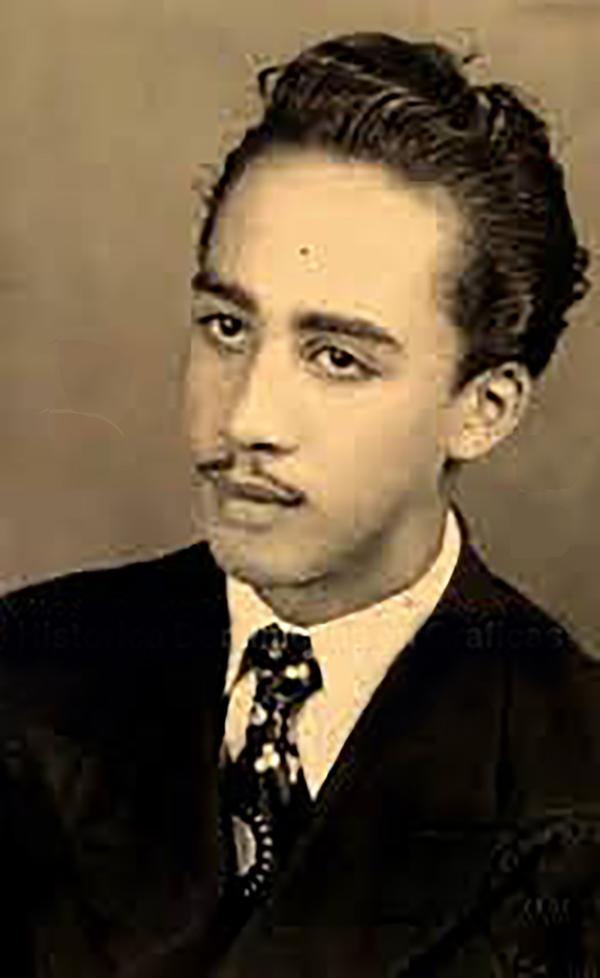Dr. Pildorín pretended to be Radhamés Sepúlveda - El Caribe Newspaper
In the early 1950s, very few rural families had a radio, much less a television. And with what current? Electricity came at the end of those years, which was used by some families who could afford that luxury, tired of hearing the tunes of happy, tired or mourning peasants. Neither the breeze of the wind, the rain or the songs of the birds could be more appreciated than the new drawer of moving images.
The few radios, before the arrival of TV, were enormous and impossible to maintain the strength of a monthly battery, which was more or less the time they lasted when they were the size of a shoe box. Until the slightly smaller ray-o-vac or eveready battery-powered spokes arrived, like a box of Milano codito.
In my field there was only television where Porfirio Almánzar, before Félix García arrived in love with Clariza; also in front of Porfirio, where Mario Hernández and a little further, where Mundito, and later, where Panchito Polanco who were all families with land, cows and vehicles when people walked or rode donkeys. They were joined by Benjamí and the Gutierrez in Pontezuela. We went to Mundito's to see the Anniversary Week and they put the television on the terrace, as if it were a small cinema. And more or less that happened in all fields.
Some peasants and plate players stayed around the pulperías to listen to the ball games and the occasional radio soap opera. Some of the boys who managed to escape from the Holy Rosary arrived there, except for the children of working parents who did not allow them to join the bums.
Through that radio we met all the players from the four teams from Gabato Sakie to Panchón Herrera.
By the early 1960s “Los Tres Villalobos” was spreading to the four winds, one of the great creations of Leandro Armando Cuoto, a Philosophy professor from Havana who did better inventing stories than, when narrated on the radio, they created a safe addition. The story told the adventures of three brothers, Macho, Rodolfo and Miguelón, three cowboys who fought an army of bearded men who wanted to establish a dictatorship on a remote island called Cuba, but very close to the FAR FAR West.
Cuoto continued writing without stopping to create Tamakún "the wandering avenger" that the Mexicans later took to comics. He is the same character that he adopted, when he wanted to live on magic and Creole fakirelería, the Tamacún (with c) tamborileño. When they discovered the tricks they told him, Tamacún if it's tallow, a term that is only heard in Tamboril, as a country brand and that comes from a cut to the Galician word seboruco, widely used by Rudecindo cursing TresPatines and accusing him of being a fool. Seboruco is a field on the hill north of Tamboril that became synonymous with brute or naive when they went down to town.

When La Voz del Yuna de Bonao was converted into the state television channel, its programming was very limited and if you turned it on you only saw an anthill and a noise like when we collided with a wave coming from some UFO lost in our galaxy.
In that television genesis, those romances directed at the entire country that was a peasant had an unforgettable participation, except for three cats that were small towns and did not take pity on a Chesterfield or a Lucky Strike and some patent leather shoes that were easier to clean. These peasant experiences were as ingrained as the dwelling itself, such as the famous one in Hato Viejo that belonged to Casimiro Guillermo as early as 1796 and that Doña María Ugarte described in a writing entitled 18th-century Peasant Housing, in her Colonial Prints.
Luis Mercedes Miche and Toña Colón played Macario and Felipa and then added Ciriaca (María Rosa Almánzar Capellán, Sirita) and Felipito, which is how Pololo started. And who would have imagined that the brave and brave Kazán was him? Kazán "the hunter" was a kind of Jungle Jim who was also a Tarzan with clothes and who could speak with words and not with pushes like Johnny Weissmuller and Lex Barker.
That adaptation of the “comedy painting” of the Dominican Voice was a success, an adaptation of the original, also by Cuoto.
The programs were increasing at the same time as the growth of schedules and advertisements. It began to be filled with what 10 years ago had already happened throughout the United States with its Bonanzas forever.
All of a sudden a figure appeared skinnier “than six o'clock” with a handjob a la Charlie Chaplin whom he wanted to imitate with such energy that a Pildorín came out with a mouth bigger than a clown's. But it turns out that Pildorín was neither a comedian nor a clown, his role was simply to lead part of a program, "Looking for the Stars" and he played the part of the raffle for the audience, helped by the unforgettable and bland "Veterano", a gentleman tall, dark, more serious than anyone who is on the way to the wall. The Veteran, Isidro Reyes, was a retired frigate lieutenant of the Era who organized the processions of the Virgin in the Colonial City. He had to put his hand in and get the winning number out of the bag. He took advantage of Pildorín the suspense of the possible winner to create a series of gestures and faces that killed children and adults with laughter. Pildorín's floo could fit three like him and the pants, although they had no patches, wanted to approximate those of the English comedian. He later adopted his own wardrobe with a butterfly tie to the Pee-Wee Hermans who, like Jerry Lewis and Jim Carrey, don't even make a hyena laugh.
Pildorín's participation in "Looking for the Stars", looking for new talents, was to animate the program that was a singing contest. If the contestant, who was almost always young or a child, was ahead or behind the orchestra or if a rooster came out, Pildorín appeared jumping and making signs to a character dressed as "El Diablito" to come out with the little bell that indicated the immediate disqualification of the contestant. The strange thing is that there are no abundant photos apart from a video that Fortunato rescued from those beginnings of the comic. The established Pildorín had an aspect of fragility very close to Norman Rockwell, that illustrator of the covers of Look and The Post magazines in North America. Little is known about his storybooks, in which “El Via Crucis a New York” stands out, the story of Chabela Reyes who wanted to be Elizabeth Kings. Bienvenido de León became Welcome of Lions.
Pildorín made fun of modern painting and there was nothing better than making an exhibition of nonsense to portray in full body what he believed was a mockery of human intelligence. That is why he held two exhibitions in 1975 entitled "Antipaintings".
The best biography is made by Rubén Darío Aponte, the announcer and writer who in an extraordinary effort published "History of the Dominican Voice" and that is frequently pirated without giving him the slightest credit. "So... how easy it issss."
The same “comedy painting” invented a number, the creation of Pildorín, which risked all the actors going to the 40th. The work in question was an imitation of Chaplin in “The Dictator” and in the scene it was shown the Hitlerian swastika that Chaplin "camouflaged" with two X's. Did Pildorín know that Trujillo had supported Franco, an ally of Hitler and Mussolini in World War II? Most likely not and that Petán himself, director of the channel, did not even notice.
That yes, Pildorín was seen in the streets with dark glasses and when someone greeted him by his artistic name, he stopped him in his tracks and said “excuse me friend, I don't know what Pildorín is talking about. I am Radamés Sepúlveda Mota”.


























Winter Prep List: How to Get Ready for Winter
06/06/2022Are you prepared for winter? It's not too late to get ready, but you'll want to take care of some important tasks in order to make sure you're prepared for the cold weather. This winter pr...